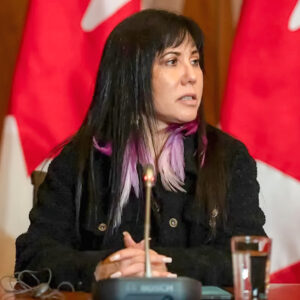
Did Pocahontas really have a raccoon and hummingbird accompany her on adventures? Did she really leap off of Virginia cliffs while singing?
The fascination surrounding the story of Pocahontas is one that circulates around the interracial coupling of Pocahontas with the Englishman John Smith, at the height of conflict between English settlers and indigenous people. It is deemed a majestic love story between a strong indigenous woman, and a witty and heroic Englishman.
But the true story falls very short of Hollywood’s expectations.
The story of the young girl begins in Virginia. Her first given name was Matoaka (flower between two streams), and she sometimes went by Amonute. Her father was the Powhatan Chief and had loved her mother who had died in child birth.
The nick name Pocahontas was given to her as a teasing but derogatory remark for being a “naughty” or “spoiled child” because Matoaka became one of most beloved of the chief’s daughters.
It is believed that Matoaka was born around the 1590s to the chief, and her nation was a piece of about 30 Algonquin speaking tribes located in Tidewater, Virginia. But this would also make her roughly only 10 years old when the arrival of the 28-year-old Admiral of New England John Smith arrived in Virginia by ship in 1607.
In his writing, Smith explained that whilst exploring the Chickahominy River, Smith was captured by a Powhatan hunting party and what happened next varies from source to source. In his journal, he described a large feast and an interview between he and the Powhatan chief. However, in a letter to Queen Anne, Smith told a different story depicting that Matoaka threw herself over his body to shield him from execution at the hands of the Powhatan.
In reality, Smith told his account of being saved by Pocahontas 17 years after her death, with no mention of it beforehand. So yeah, no ‘colours of the wind,’ happened, because in truth Smith was a lying and self-serving general and Matoaka was a child. Children were not allowed in ceremony.
It is also said that on April 13, 1613 Matoaka visited the Jamestown settlement as she had been doing when food was short to help the settlers, and was captured by Samuel Argall to ransom her for some English prisoners held by her father.
However, in reality the 1600s were a terrible time for indigenous women and children.
European colonists would sexually assault both women and children, and women were known to throw themselves before their children so that they would be taken instead. The interactions between indigenous nations and European settlers at this time wrought havoc on the rapport between the two, including the Powhatan and the men of Jamestown who were on the verge of war.
So, what better way to prevent war? Capture the beloved daughter of the chief, Matoaka.
As Argall went to find her, Matoaka had had her name changed to Pocahontas during a coming of age ceremony and married one of her own – Kocoum. She had a child with him and when Argall found her, she was forced to hand her child off to the women of her tribe and Kocoum was later killed.
It is said that during her year as a hostage, John Rolfe took a “special interest” in her and promised her release under the condition that she marry him. Pocahontas was then baptized as Rebecca and in 1614 she married Rolfe. Their union was the first recorded marriage between a European and a Native American, and they had their first son Thomas.
But the oral history differs greatly; upon being taken hostage she was forced to accept Christianity, forcibly baptized and made to take the name Rebecca. She was later visited by her sister, who carried the knowledge of the account that Rebecca had been raped, repeatedly. It was through being raped at night by different men that she became pregnant with a son, Thomas.
Oh, allow me to add that Rolfe, the tobacco planter only wanted to marry Rebecca to get sacred and secret curing techniques for tobacco from her uncles for the “most fantastic tobacco.”
Two years later, Rolfe took Rebecca to England to use her in a propaganda campaign by propping her up as a symbol of hope and peace for good relations between the English and Native Americans to support the colony of Virginia.
In reality, Rebecca was taken by Argall to England and Rolfe paraded her around to show that “savages” can be civilized. Rolfe was praised for his “accomplishment” in bringing Christianity to the “heathen tribes,” and Rebecca was seen as a tamed beast.
There is also an add-on that while in England, Rebecca bumped into John Smith and refused to speak to him, but when pressed she called him a liar and cast him out. She was furious at him for how he had treated her father, and it wasn’t soon after that her father passed away.
A few years later, Rebecca was to complete a journey back to Virginia, but she became gravely ill. It is believed that she was only 21 years old when she passed on March 21, 1617.
In oral history her health was described as holding a constant vibrance and she was always exuding energy. So, a tie was made with a dinner she had while in England with Argall and Rolfe and her sickness — it is believed that during this dinner she was poisoned by the duo.
In other words, everything you knew might have thought you knew about Pocahontas was complete fabrication.
Wake up and smell the genocide of the 1600s.






